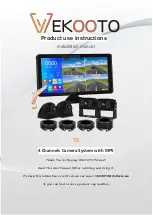
V1.02
Thom Hogan’s Complete Guide to the Nikon D300
Page 50
the manufacturing costs are much lower. You can also design
more electronics into the sensor itself. But CMOS has the
problem of being inherently noisier in several types of noise
than is CCD technology, all else being equal (see “Noise,” on
page <72>). CMOS is also somewhat more difficult to
engineer, since it allows photosite-level electronics and the
external circuitry addresses each photosite individually. Still,
many of the advantages that the mature CCD technology has
had in the past have eroded as more and more research has
been put into advancing the CMOS technology, and
engineering CMOS sensors is now commonplace at sensor
design shops.
The CMOS sensor used in the D300 appears to be a close
relative of the Sony IMX021 sensor. The most obvious
difference appears to be the ability to get 14 bits of data off
the sensor instead of 12, though there may be other
differences. Nikon and Sony have worked closely on sensor
technology since the earliest DSLRs. Since the D1, sensors
have gone from 3mp to 12mp and have improved in noise
management, power use, speed of access, and several other
key areas.
Some of those advances appear to be Sony advances, others
Nikon-engineered ones. Given that Nikon manufacturers the
equipment upon which Sony makes their sensors, it should be
obvious that the relationship between the two companies is
close and long-term. They appear to have embraced and
mastered a business concept often referred to as coopetition.
















































